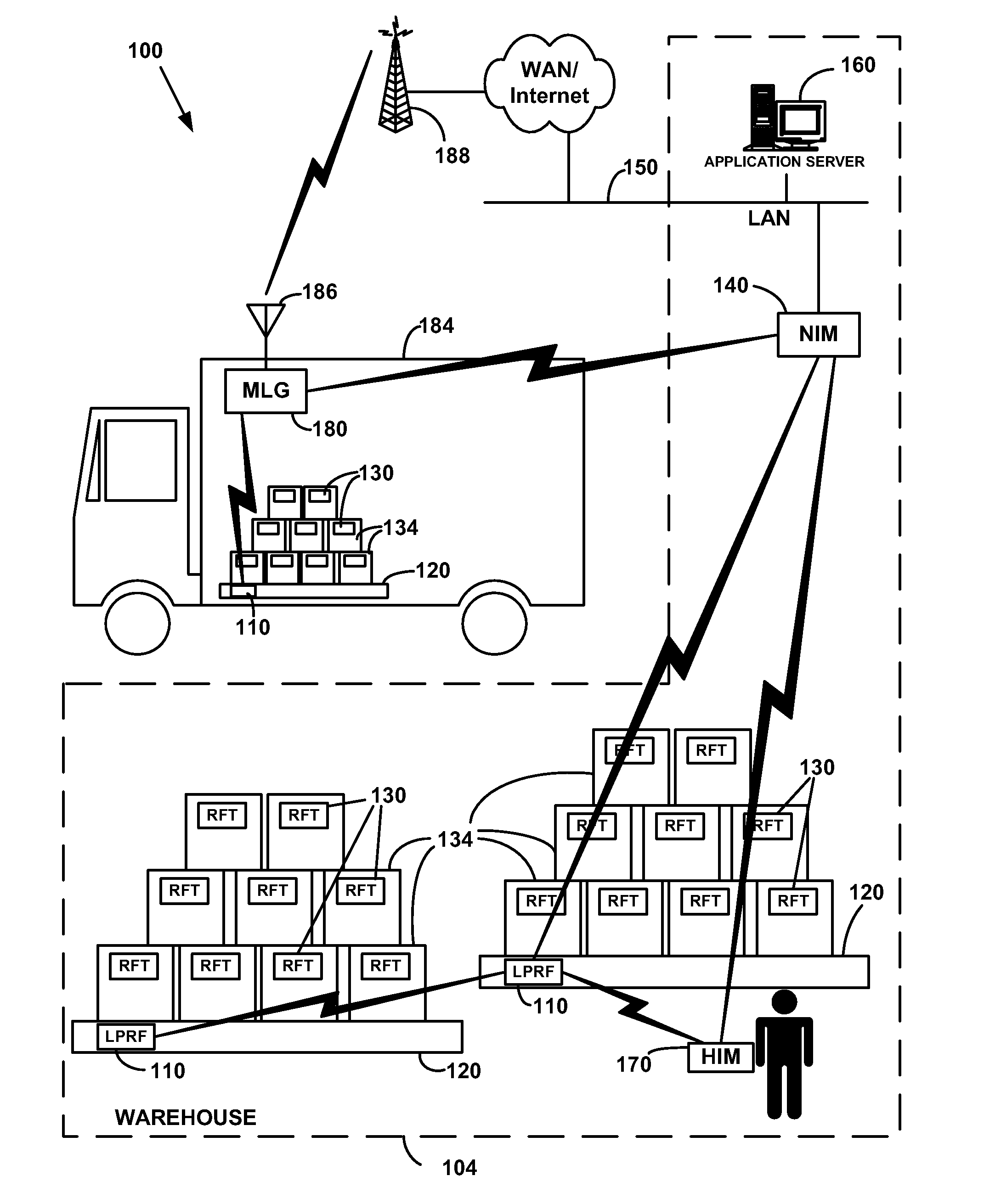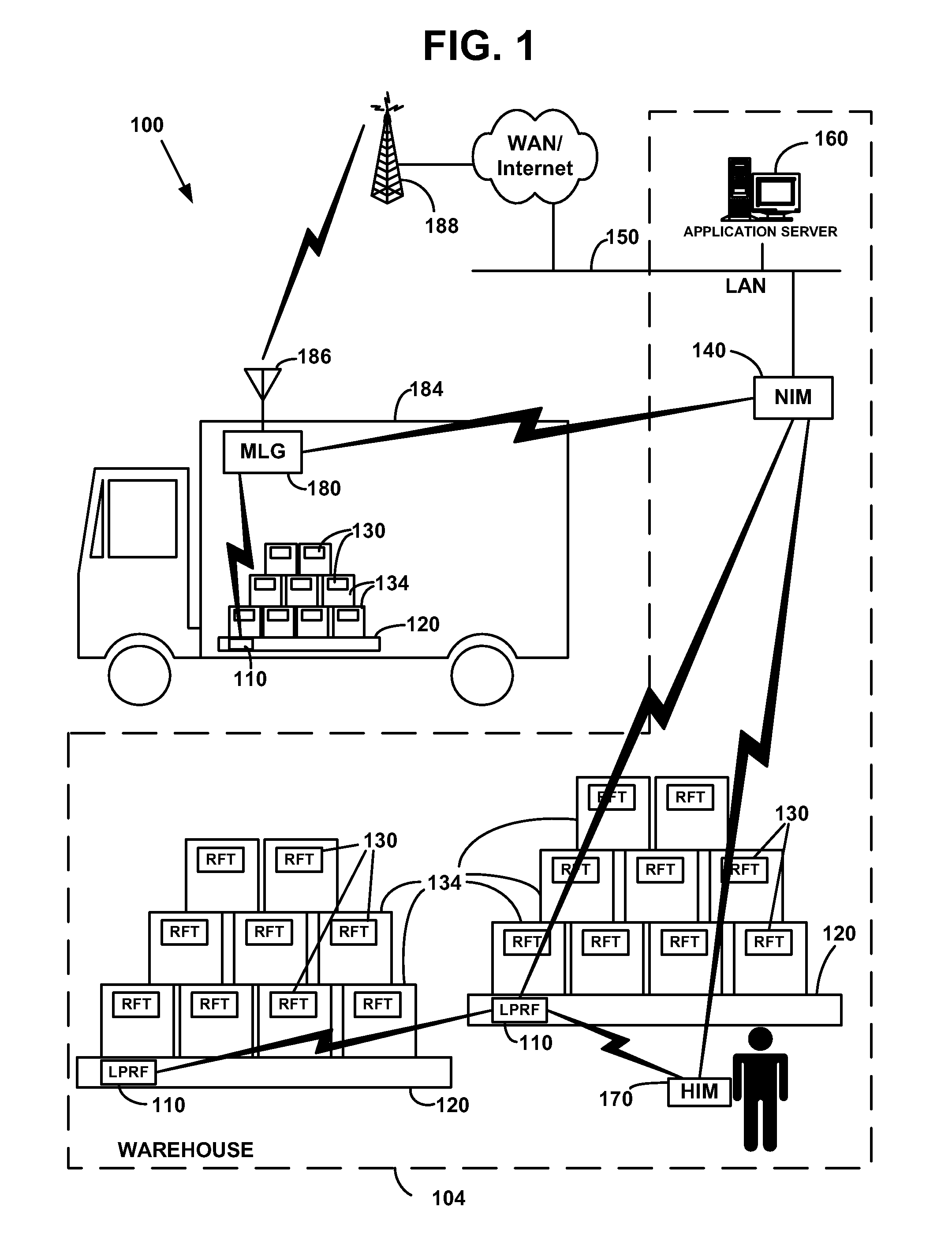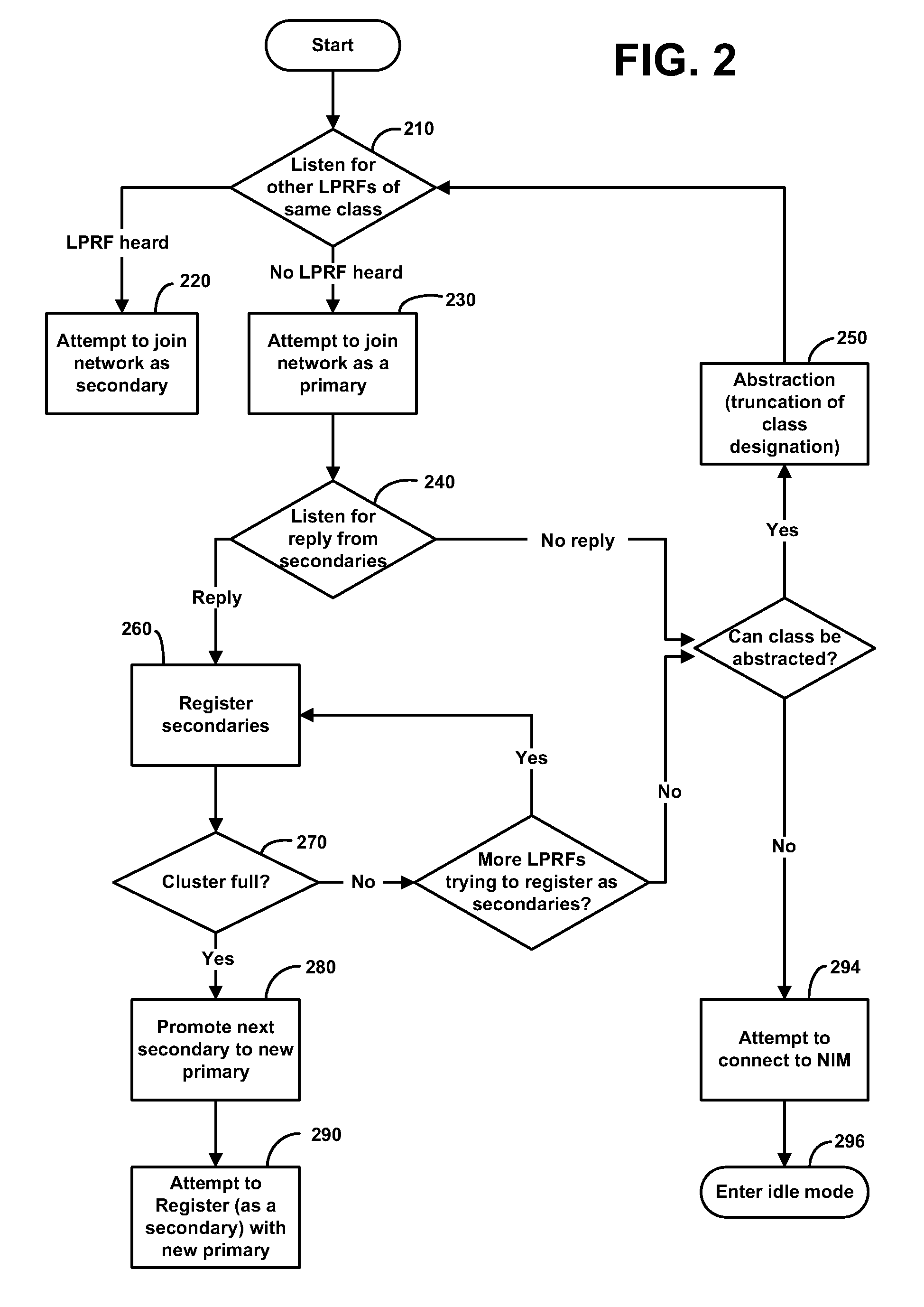Automatic and dynamic changing of class in class-based asset tracking and monitoring systems
a technology of asset tracking and monitoring system, applied in the field of wireless transceivers, can solve the problems of increasing radio traffic and interference, reducing the battery life most known methods that do not address the self-configuration of the wireless node, so as to increase the range and increase the sensitivity
- Summary
- Abstract
- Description
- Claims
- Application Information
AI Technical Summary
Benefits of technology
Problems solved by technology
Method used
Image
Examples
example 1
Tagged Luggage System
[0195]When a passenger checks in at the airport a Wireless Tag is attached to each item of the passenger's luggage. A corresponding Wireless Tag identifying the passenger is provided to the passenger to verify his / her identity at the destination baggage pickup location. A Wireless Reader Tag near the check-in counter detects and logs the Wireless Tags for the luggage in association with the passenger's Wireless Tag and related information into the asset-tracking system. The asset-tracking system downloads a profile into each of the Wireless Tags as identified by the Wireless Reader Tag at the check-in counter. The profiles are in the format::Tag_Type Airline_Name:Passenger Class:Origin_and_Destination:Flight_No: Tag_Status:passenger_id. An example of the profile for the passenger's Wireless Tag is::passenger:Delta_Airlines:First_Class:ATL-SEA:FLT-490:check-in:4556778-8 KDKO8; while an example of the profile for the luggage Wireless Tag is::baggage:Delta Airlines...
example 2
Warehouse / Retail System
[0198]A warehouse store such as Costco carries hundreds of brands of products. Nevertheless, all products need to be inventoried on a real-time basis. In accordance with the present invention, a Wireless Reader Tag is attached to each pallet of goods and assigned a class designation that denotes the manufacturer of goods on that pallet (e.g., Pillsbury, Sony, Kellogg's, etc.). Each Wireless Reader Tag may also include in its class designation or profile, information about the goods on the pallet. Each boxes on the pallet carries a Wireless Tag that is read by the Wireless Reader Tag of the pallet. On demand, each Wireless Reader Tag gathers information about the Wireless Tags on its pallet and relays the information back to the asset-tracking application server. At any given time, an employee of the warehouse store can inventory goods of a selected manufacturer by sending a query that will be received only by Wireless Reader Tags of the selected class correspo...
example 3
Shipping Containers Tracking System
[0199]Containers full of material shipped via rail or ship can be received and logged into a yard by manufacture based on class information stored on Wireless Reader Tags. The Wireless Reader Tags form a network with other containers from a particular manufacturer and allow quick and efficient tracking of containers. Messages directed to a selected class will not affect the battery life of Wireless Reader Tags of other classes because only Wireless Reader Tags of the selected class will wake up from standby to receive the messages and process the queries. The manufacturer classes can be divided into categories and subcategories, thereby further collectively reduce battery consumption and radio interference.
PUM
 Login to View More
Login to View More Abstract
Description
Claims
Application Information
 Login to View More
Login to View More - R&D Engineer
- R&D Manager
- IP Professional
- Industry Leading Data Capabilities
- Powerful AI technology
- Patent DNA Extraction
Browse by: Latest US Patents, China's latest patents, Technical Efficacy Thesaurus, Application Domain, Technology Topic, Popular Technical Reports.
© 2024 PatSnap. All rights reserved.Legal|Privacy policy|Modern Slavery Act Transparency Statement|Sitemap|About US| Contact US: help@patsnap.com










